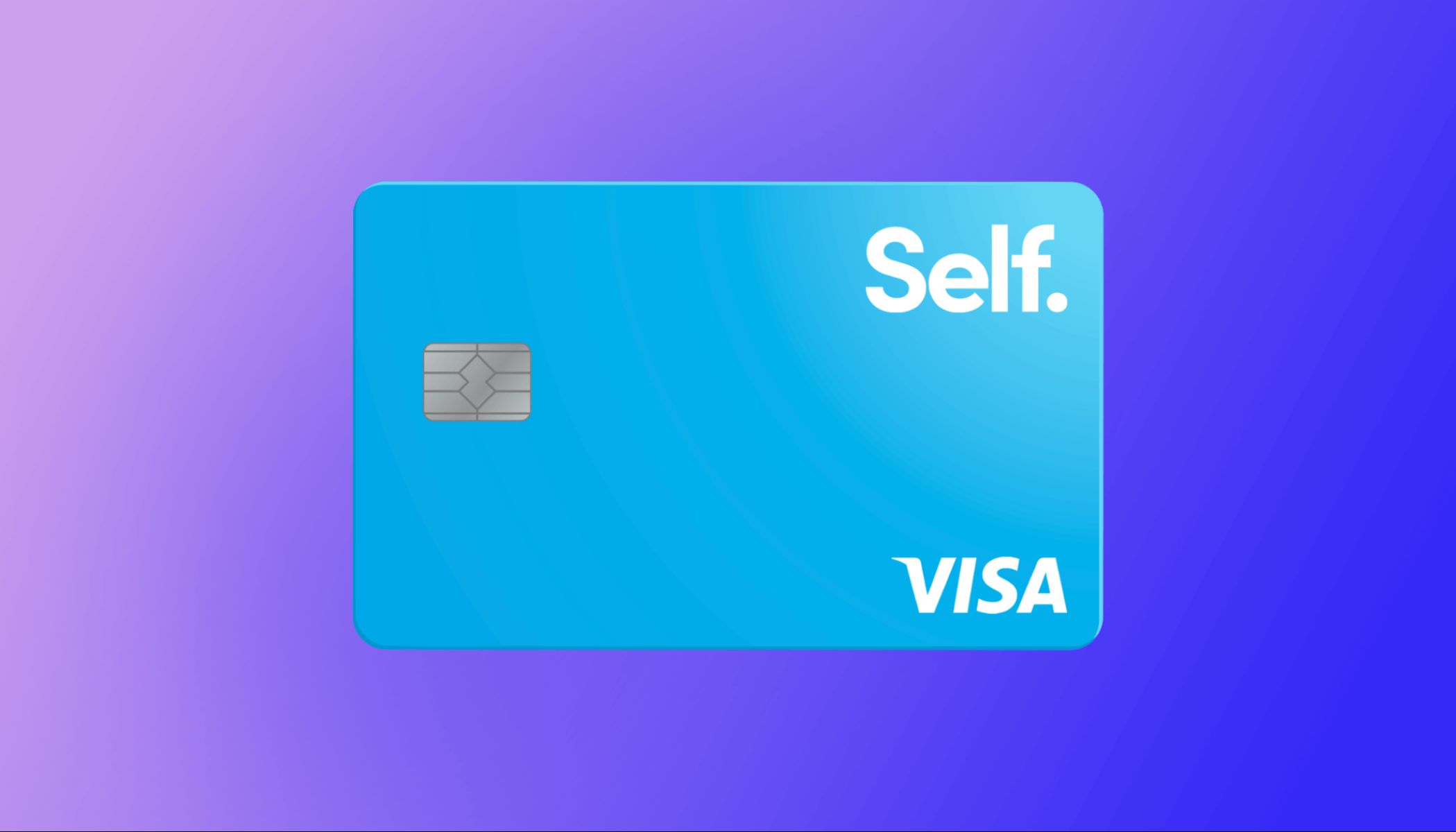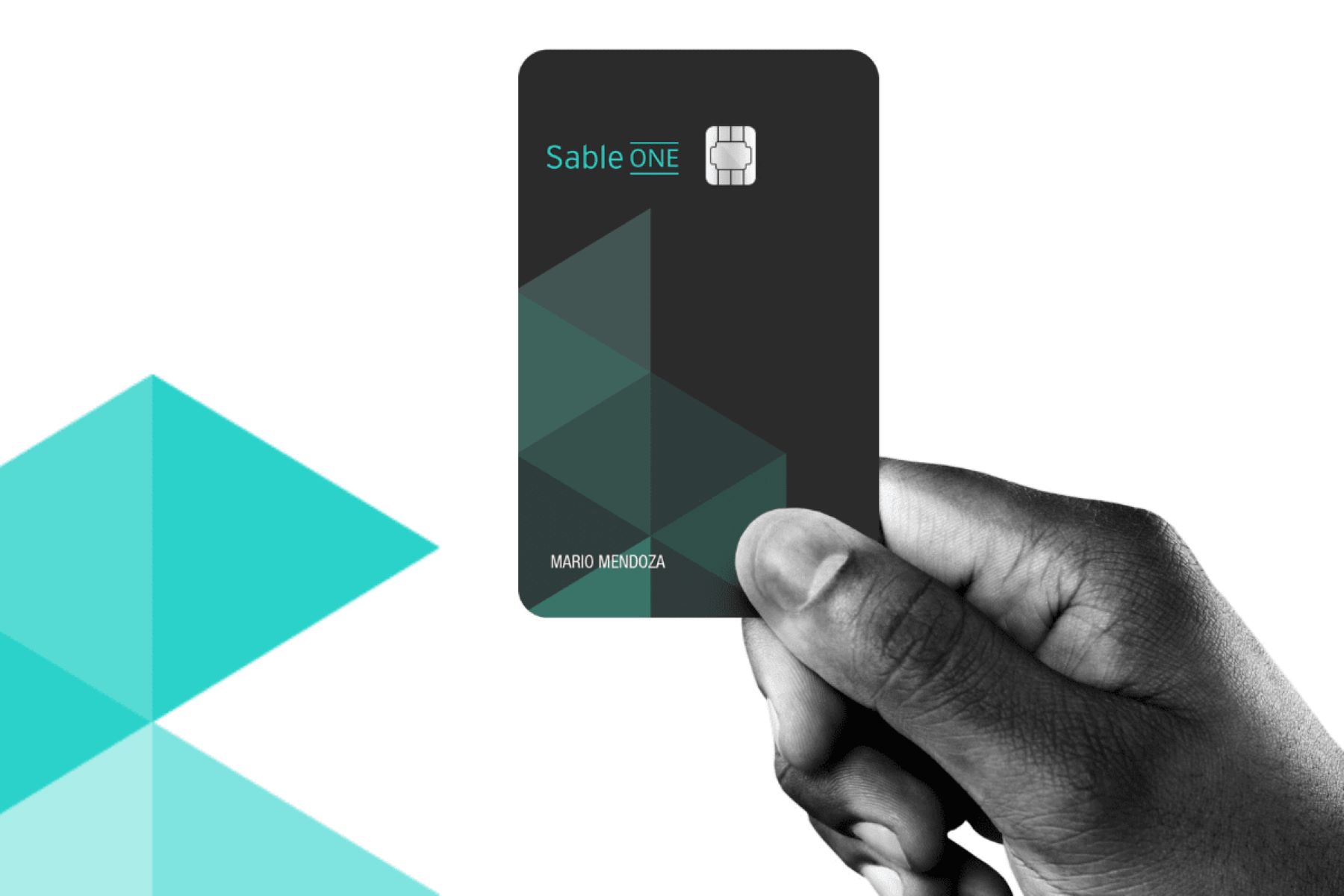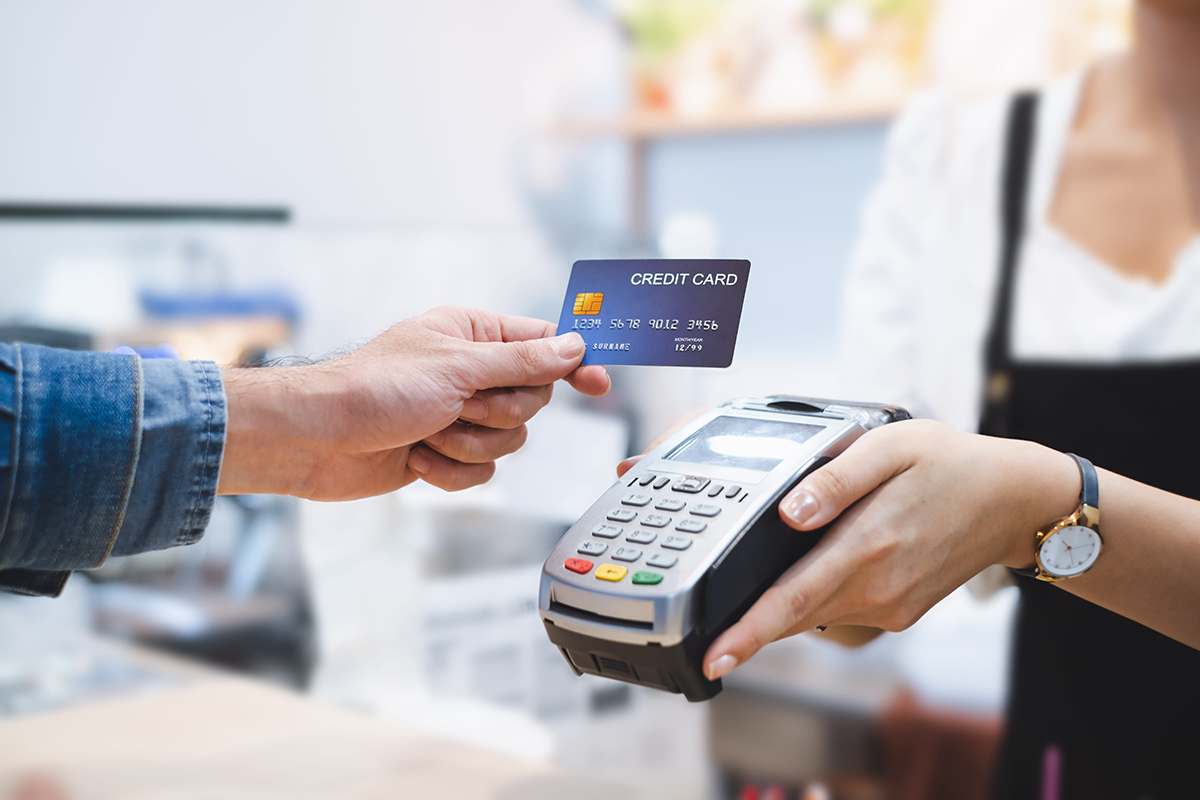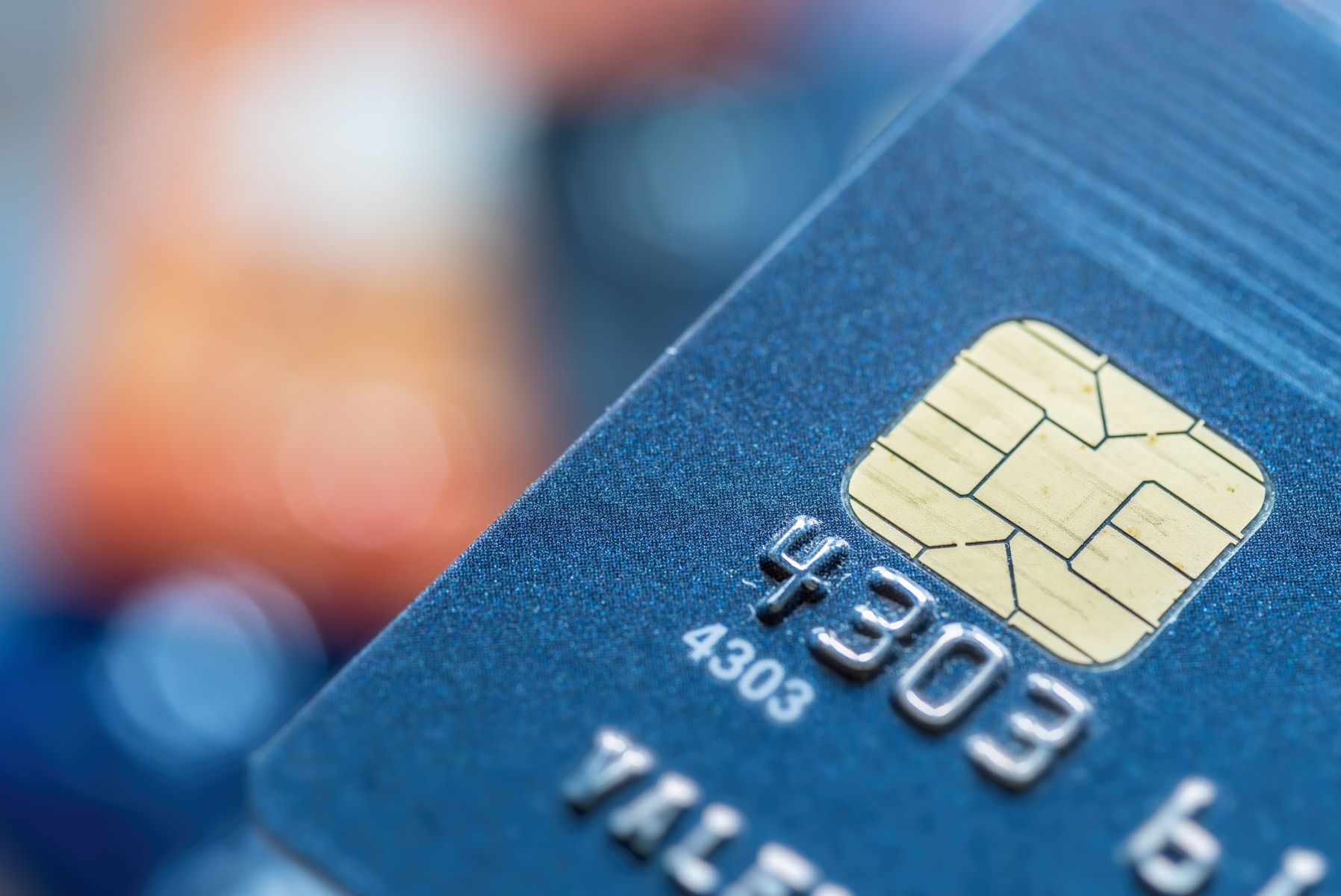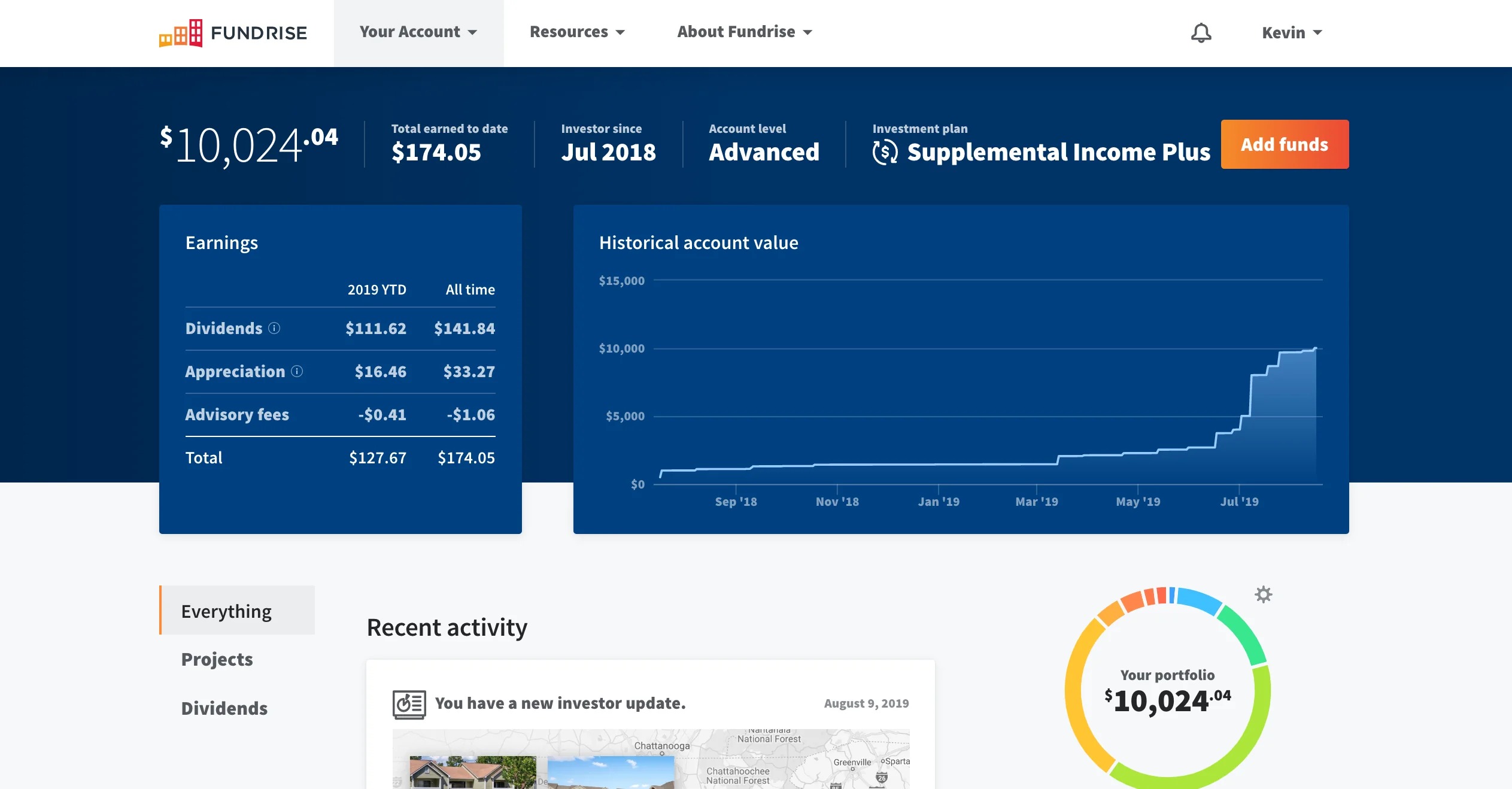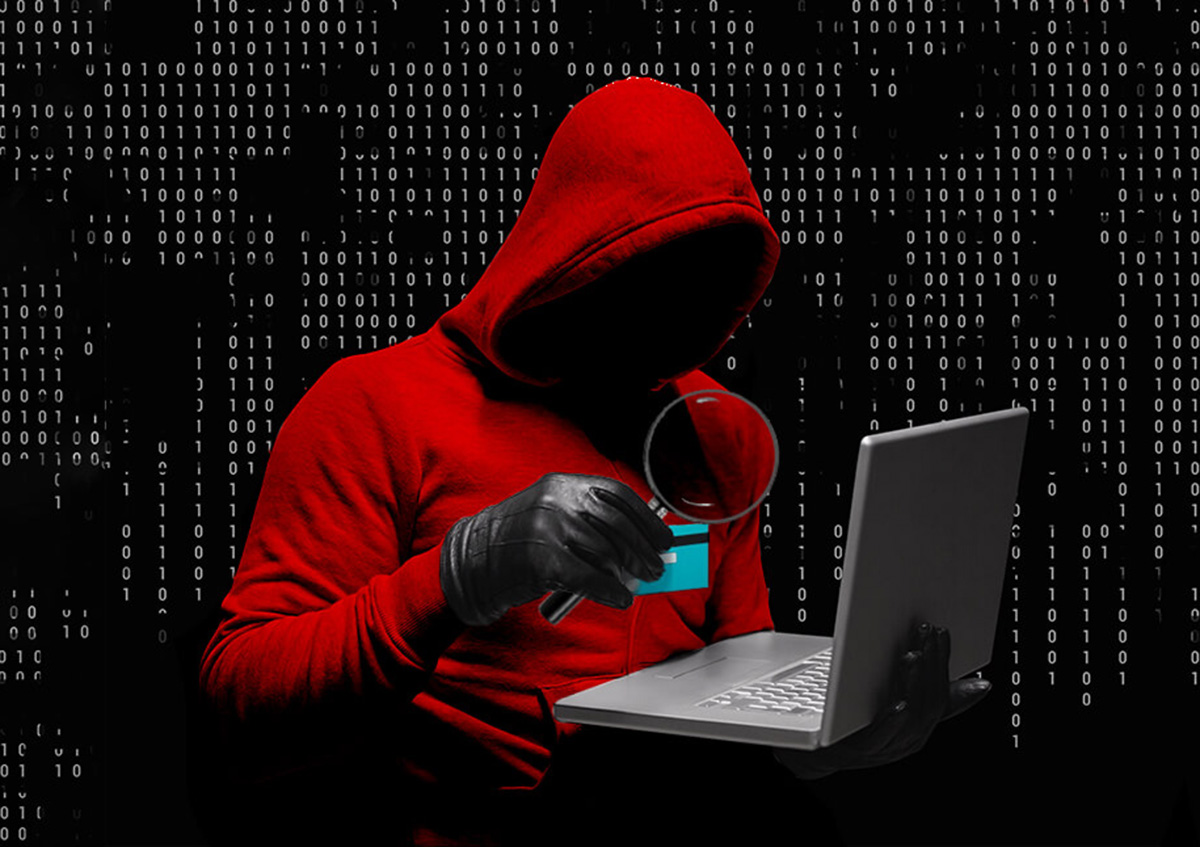

Finance
How Does Credit Card Fraud Investigation Work
Published: November 7, 2023
Learn how credit card fraud investigation works and protect your finances. Stay informed about the latest techniques to prevent and detect fraudulent activities.
(Many of the links in this article redirect to a specific reviewed product. Your purchase of these products through affiliate links helps to generate commission for LiveWell, at no extra cost. Learn more)
Table of Contents
Introduction
Credit card fraud is a pervasive problem in today’s digital age. With the increasing prevalence of online shopping and electronic transactions, criminals have found innovative ways to exploit the vulnerabilities in credit card systems. Credit card fraud not only results in financial losses for individuals and businesses, but it also erodes trust in the overall financial ecosystem.
Investigating credit card fraud is a complex process that requires skilled professionals and collaboration between financial institutions, law enforcement agencies, and specialized investigative units. The objective of a credit card fraud investigation is to identify the perpetrators, gather evidence, and ultimately bring them to justice.
In this article, we will explore the intricacies of credit card fraud investigation, from the initial steps to the eventual prosecution of the criminals involved. We will delve into the various types of credit card fraud, the important role of evidence collection and collaboration with law enforcement, as well as the measures taken to prevent and protect against future incidents.
By understanding how credit card fraud investigations work, we can better equip ourselves with the knowledge needed to protect our financial assets and contribute to the overall safety and security of the banking system.
Reason for Investigating Credit Card Fraud
Credit card fraud is a serious offense that has significant consequences for individuals, businesses, and the overall economy. Investigating credit card fraud is crucial for several reasons:
1. Financial Losses: Credit card fraud results in substantial financial losses for both individuals and businesses. When fraudulent transactions occur, it is the cardholders who suffer the immediate financial burden. They may be held responsible for unauthorized charges, leading to the depletion of funds and potential damage to their credit score. For businesses, credit card fraud can lead to lost revenue, increased operational costs, and a tarnished reputation.
2. Protection of Individuals: Investigating credit card fraud is essential to safeguarding individuals from further harm. The victims of credit card fraud may experience emotional distress, anxiety, and a sense of violation. By conducting thorough investigations, law enforcement and financial institutions can prevent future losses and provide support to those affected.
3. Detection of Larger Criminal Networks: Credit card fraud investigations often uncover larger criminal networks involved in organized crime. These networks may engage in a wide range of illegal activities beyond credit card fraud, such as identity theft, money laundering, and drug trafficking. By investigating credit card fraud, law enforcement agencies can gather valuable intelligence and dismantle these criminal networks, ensuring the safety and security of society.
4. Deterrence: The investigation and prosecution of credit card fraud act as a deterrent to potential criminals. When perpetrators are apprehended and face legal consequences, it sends a strong message that such fraudulent activities will not be tolerated. This deterrent effect can help discourage individuals from engaging in credit card fraud and protect the financial system.
5. Preserving Trust in the Financial System: The trust and confidence of consumers and businesses in the financial system are of utmost importance. Investigating and prosecuting credit card fraud helps maintain and strengthen this trust. It demonstrates that financial institutions and law enforcement take fraud seriously and are actively working to ensure the security and integrity of the payment system.
Overall, investigating credit card fraud is imperative to minimize financial losses, protect individuals, detect larger criminal networks, deter potential criminals, and preserve trust in the financial system. By understanding the reasons behind credit card fraud investigations, we can appreciate the importance of these efforts in maintaining a secure and reliable payment ecosystem.
Types of Credit Card Fraud
Credit card fraud can take many forms, with criminals constantly developing new tactics to exploit vulnerabilities in the system. Understanding the different types of credit card fraud is crucial for investigators and individuals alike to effectively combat these fraudulent activities. Here are some of the most common types of credit card fraud:
- Lost or Stolen Cards: This is one of the oldest forms of credit card fraud. Criminals steal or find discarded credit cards and use them to make unauthorized purchases. They may also use stolen cards to withdraw cash from ATMs.
- Skimming: Skimming is a method where criminals use a device to capture card information, such as the card number and PIN, when the card is swiped at a compromised point-of-sale terminal. The stolen information is then used to make fraudulent transactions.
- Phishing: Phishing involves tricking individuals into divulging their credit card information or other sensitive details through fraudulent emails, messages, or websites that appear to be legitimate. Once the criminals obtain the information, they can use it to make unauthorized charges or commit identity theft.
- Card Not Present (CNP) Fraud: CNP fraud occurs when the cardholder’s information is stolen and used for online or telephone purchases where the physical card is not required. Criminals obtain the card details through various means and use them to make fraudulent transactions.
- Identity Theft: In cases of identity theft, criminals use stolen personal information, including credit card details, to impersonate the victim and open new credit card accounts or make unauthorized transactions in their name.
- Counterfeit Cards: Criminals create counterfeit credit cards by encoding stolen card information onto blank cards or re-encoding expired cards. These counterfeit cards are then used to make unauthorized purchases before the fraudulent activities are detected.
- Account Takeover: In an account takeover, criminals gain unauthorized access to a cardholder’s account and make fraudulent transactions. This can be done through hacking, phishing, or other methods that compromise the security of the account.
It’s important to note that these are just a few examples of the various types of credit card fraud. Criminals are constantly adapting their techniques, making it crucial for investigators and financial institutions to stay informed and implement robust security measures to combat these fraudulent activities.
Initial Steps in Credit Card Fraud Investigation
When a credit card fraud is reported or suspected, investigators follow a series of initial steps to begin the investigation process. These steps help set the foundation for a thorough and efficient investigation. Here are the key initial steps in a credit card fraud investigation:
- Receiving the Complaint: The investigation typically begins with the receipt of a complaint from the victim or the financial institution detecting suspicious activity. It is crucial to promptly document the details of the complaint, including the victim’s account information, the unauthorized transactions, and any relevant supporting documents.
- Gathering Information: Investigators gather as much information as possible about the fraudulent transactions. This includes obtaining transaction records, surveillance footage, and any other evidence that can shed light on the identity of the perpetrator or the methods used.
- Analysis of the Fraudulent Activity: Investigators carefully analyze the fraudulent transactions to identify patterns, commonalities, and potential points of compromise. This analysis helps in understanding the modus operandi of the fraudster, aiding in the investigation and prevention of future incidents.
- Contacting the Cardholder: Investigators may reach out to the victim to gather additional information, verify the authenticity of the transactions, and obtain any relevant evidence or witness statements that can assist in the investigation.
- Notifying Financial Institutions: Investigators notify the relevant financial institutions, such as the card issuer or the merchant, about the fraudulent activity. This facilitates collaboration between investigators and financial institutions to gather additional evidence and take necessary actions to prevent further unauthorized transactions.
- Securing Evidence: Investigators ensure the preservation and integrity of any physical or digital evidence related to the fraudulent transactions. This can involve collecting CCTV footage, transaction records, IP addresses, or any other evidence that may be used in subsequent legal proceedings.
- Reporting to Law Enforcement: Depending on the severity and complexity of the fraud, investigators may report the case to law enforcement agencies, such as the local police or the cybercrime division, for further investigation and potential criminal charges.
- Communication with Other Agencies: In cases involving cross-border or organized credit card fraud networks, investigators may collaborate with other national or international agencies, such as Interpol or Europol, to gather intelligence and broaden the scope of the investigation.
These initial steps in a credit card fraud investigation pave the way for a thorough examination of the fraudulent activity and help build a strong case for prosecution. By following these steps, investigators can gather evidence, identify the perpetrators, and take the necessary actions to ensure justice is served.
Gathering Evidence
Gathering evidence is a crucial step in credit card fraud investigations. The evidence collected not only helps identify the perpetrators but also strengthens the case for prosecution. Investigators employ various techniques and methods to gather evidence effectively. Here are the key methods used in gathering evidence in credit card fraud investigations:
- Transaction Records: Investigators gather transaction records from financial institutions and merchants involved in the fraudulent activity. These records provide crucial details such as the date, time, location, and value of the unauthorized transactions.
- Surveillance Footage: If available, investigators review CCTV footage from the locations where the fraudulent transactions took place. This footage can provide visual evidence of the suspect’s appearance, actions, and any accomplices involved.
- Digital Evidence: In cases of online credit card fraud, investigators analyze digital evidence such as IP addresses, email communications, web browser history, and login records. These digital footprints can help trace the origin of fraudulent transactions and potentially identify the fraudster.
- Witness Testimonies: Investigators interview witnesses who may have observed the fraudulent activity or had interactions with the suspects. Witness testimonies can provide valuable insights into the modus operandi of the fraudsters and help establish their identities.
- Financial Analysis: Investigators conduct a thorough financial analysis of the victim’s accounts, as well as the accounts used in the fraudulent transactions. This analysis can reveal patterns, unusual transactions, or money trails that may connect multiple cases or individuals involved in credit card fraud.
- Collaboration with Financial Institutions: Investigators work closely with financial institutions and card issuers to obtain additional evidence. This collaboration may involve requesting access to account statements, transaction logs, and any other information that can help piece together the puzzle of the fraudulent activity.
- Forensic Analysis: In complex cases, forensic analysts may be involved to examine digital devices, such as computers or smartphones, for traces of fraudulent activities. They can retrieve deleted data, analyze encryption methods used, and trace communications to strengthen the evidence.
- Expert Consultations: Investigators may consult with experts in areas such as cybersecurity, banking protocols, or forensic accounting to analyze the evidence and provide expert opinions. These consultations can help corroborate findings and enhance the credibility of the evidence in court.
By utilizing these methods and techniques, investigators gather a comprehensive range of evidence necessary to build a strong case against the perpetrators of credit card fraud. This evidence serves as a critical foundation for successful prosecution and deterrence of future fraudulent activities.
Collaboration with Law Enforcement
Collaboration with law enforcement agencies is a vital aspect of credit card fraud investigations. By working hand-in-hand with law enforcement, investigators can leverage their expertise and resources to gather evidence, apprehend the perpetrators, and ensure that justice is served. Here are key aspects of collaboration with law enforcement in credit card fraud investigations:
- Reporting the Case: Investigators report the credit card fraud case to the relevant law enforcement agency, providing them with detailed information regarding the nature of the fraud, the victims, and any potential leads or evidence that has been collected thus far.
- Specialized Units: In many jurisdictions, law enforcement agencies have specialized units or divisions dedicated to handling financial crimes, including credit card fraud. These units are staffed with trained investigators who understand the intricacies of financial crimes and can bring their expertise to bear on the investigation.
- Sharing Information: Investigators collaborate with law enforcement agencies by sharing crucial information, such as transaction records, surveillance footage, digital evidence, and witness testimonies. This information exchange helps build a comprehensive picture of the fraudulent activity and aids in identifying the perpetrators.
- Pursuing Legal Action: Law enforcement agencies play a crucial role in pursuing legal action against the individuals or criminal networks involved in credit card fraud. They gather evidence, prepare case files, and work closely with prosecutors to build a strong case for prosecution.
- Apprehending Perpetrators: With the help of law enforcement, investigators can identify and apprehend the individuals responsible for the credit card fraud. Law enforcement agencies have the authority and resources to conduct arrests, execute search warrants, and gather further evidence to strengthen the case.
- Coordinating with International Agencies: In cases involving cross-border credit card fraud or organized criminal networks, collaboration between law enforcement agencies at an international level becomes crucial. Interpol, Europol, and other international law enforcement organizations aid in sharing intelligence, coordinating investigations, and facilitating joint operations to apprehend suspects.
- Providing Expertise: Law enforcement agencies have access to specialized resources and expertise that can enhance the investigation. This includes forensic analysts, cybercrime experts, and investigators experienced in financial crime. Their insights and support strengthen the investigative process and ensure that all relevant aspects of the case are thoroughly examined.
- Witness Protection: In cases where witnesses may be at risk, law enforcement agencies can provide witness protection measures to ensure their safety. This can include offering anonymity, relocating witnesses, or providing security details to safeguard their well-being.
Collaboration with law enforcement agencies is crucial in credit card fraud investigations. By harnessing the power of law enforcement resources, expertise, and legal authority, investigators can effectively gather evidence, apprehend the perpetrators, and contribute to the overall deterrence of credit card fraud.
Suspect Identification and Tracking
In credit card fraud investigations, identifying and tracking the suspects is a critical step in bringing them to justice. Investigators employ various techniques and resources to identify the individuals responsible for the fraudulent activity and track their movements. Here are key elements of suspect identification and tracking in credit card fraud investigations:
- Data Analysis: Investigators analyze transaction data, surveillance footage, and other relevant information to identify patterns and connections that could lead to the identification of the suspects. They look for commonalities in terms of locations, timeframes, or modus operandi that could help identify individuals involved in multiple fraudulent activities.
- Collaboration with Financial Institutions: Investigators work closely with financial institutions, such as banks and credit card companies, to gather information about the transactions and identify any suspicious activities. They monitor account activities, track money trails, and leverage the institutions’ expertise to identify potential suspects.
- Reviewing Digital Evidence: Investigators examine digital evidence, including IP addresses, email communications, and other online activities, to trace the origins of the fraudulent transactions and potentially identify the suspects. They may collaborate with cybersecurity experts to analyze digital footprints left by the fraudsters.
- Coordinating with Law Enforcement: Investigators collaborate with law enforcement agencies to leverage their resources, expertise, and databases. They share information, cross-reference data, and work together to identify potential suspects involved in credit card fraud activities. This collaboration extends to local, national, and international law enforcement agencies if the fraud crosses jurisdictional boundaries.
- Utilizing Surveillance Techniques: In certain cases, investigators may employ surveillance techniques to track the suspects’ physical movements. This could involve the use of surveillance teams, video surveillance, or GPS tracking, depending on the legal and operational considerations.
- Undercover Operations: In more complex cases or where the fraudsters operate in organized networks, investigators may carry out undercover operations to gain insights into their activities and gather evidence. This could involve posing as buyers or sellers and engaging with the suspects to gather intelligence on their identities and operations.
- Utilizing Informants: Investigators may rely on informants who have insider knowledge of credit card fraud operations or are acquainted with the suspects involved. Informants can provide valuable leads, tips, or firsthand information that aids in suspect identification and tracking.
- Financial Analysis: Investigators conduct meticulous financial analysis to trace the flow of funds involved in credit card fraud. By following the money trail, investigators can potentially identify the suspects, their associates, and uncover any underlying criminal networks.
Through a combination of data analysis, collaboration, surveillance, and intelligence-gathering techniques, investigators can effectively identify the suspects involved in credit card fraud and track their movements. This information is vital in building a strong case for prosecution and ensuring that the perpetrators are held accountable for their actions.
Prosecution and Legal Actions
Prosecution and legal actions are critical components of credit card fraud investigations. They involve bringing the identified suspects to court and pursuing legal remedies to ensure they are held accountable for their fraudulent activities. Here are the key steps involved in the prosecution and legal actions taken in credit card fraud cases:
- Gathering Sufficient Evidence: Before proceeding with prosecution, investigators ensure they have gathered enough evidence to build a strong case. This includes transaction records, surveillance footage, witness testimonies, digital evidence, and any other supporting documentation.
- Preparing Case Files: Investigators work closely with prosecutors to compile all the collected evidence and prepare comprehensive case files. These files outline the details of the fraud, the suspects’ identities, the evidence against them, and any associated charges.
- Presenting the Case to the Prosecution: Investigators present the case files and evidence to the prosecution team responsible for handling the legal proceedings. They provide clear and concise explanations of the fraudulent activities, the suspects’ involvement, and the impact on the victims.
- Commencing Legal Proceedings: Upon reviewing the case, the prosecution team decides whether to proceed with legal action. If determined to be sufficient, they initiate the legal proceedings by filing charges against the suspects involved in the credit card fraud.
- Arrest and Indictment: Law enforcement agents execute arrest warrants for the suspects involved in the credit card fraud. They ensure that proper procedures are followed, and the individuals are taken into custody. Subsequently, an indictment is presented, formally charging the suspects with the specific offences related to credit card fraud.
- Court Proceedings: The suspects are brought before the court to face trial. The prosecution presents the evidence gathered during the investigation, including witness testimonies and expert opinions. The defense has the opportunity to present their case and challenge the prosecution’s evidence.
- Verdict and Sentencing: After considering all the evidence and arguments presented by both sides, the court delivers a verdict. If the suspects are found guilty, they may face various penalties, including fines, probation, or imprisonment, depending on the severity of the credit card fraud and the applicable laws.
- Recovery of Funds: Upon obtaining a conviction, efforts are made to recover any fraudulently obtained funds or assets. This can involve seizing assets, freezing bank accounts, or initiating restitution processes to compensate the victims for their losses.
- Post-Conviction Actions: Following the legal proceedings, investigators and law enforcement agencies continue to monitor the suspects and their networks. This helps gather additional intelligence, identify accomplices, and prevent further fraudulent activities.
Prosecution and legal actions play a crucial role in deterring credit card fraud and ensuring that those involved are held accountable. By effectively presenting the evidence, obtaining convictions, and seeking appropriate penalties, legal actions serve as a deterrent and help protect individuals and businesses from future fraud incidents.
Prevention and Protection Measures
Prevention and protection measures are essential in combating credit card fraud. By implementing proactive strategies and adopting security measures, individuals, businesses, and financial institutions can mitigate the risks associated with credit card fraud. Here are key prevention and protection measures to consider:
- Secure Online Transactions: Use secure websites with HTTPS encryption for online transactions. Avoid making purchases on unsecured or suspicious websites.
- Protect Personal Information: Safeguard your credit card and personal information. Avoid sharing sensitive details, such as your PIN or CVV, with anyone. Be cautious of phishing attempts and only provide information on trusted platforms.
- Monitor Account Activity: Regularly review your credit card statements and transaction history. Report any unauthorized or suspicious activity to your card issuer immediately.
- Set Up Transaction Alerts: Enable transaction alerts or notifications provided by your card issuer. This allows you to receive real-time updates on any activity on your card, helping you detect and respond to any unauthorized transactions promptly.
- Use Two-Factor Authentication: Utilize two-factor authentication methods, such as SMS verification or biometric authentication, for added security when accessing your accounts or making online purchases.
- Keep Software Updated: Ensure your devices and applications have the latest software updates and security patches installed. This helps protect against known vulnerabilities that fraudsters may exploit.
- Use Secure Networks: Avoid using public or unsecured Wi-Fi networks for financial transactions. Instead, use secure networks with password protection to minimize the risk of interception or unauthorized access to your information.
- Be Cautious of Card Skimmers: Be vigilant when using ATMs or card payment terminals. Inspect for any suspicious devices or signs of tampering that could indicate the presence of card skimmers. Consider covering the keypad when entering your PIN to prevent it from being captured.
- Implement Strong Passwords: Use unique, strong passwords for your online accounts and change them regularly. Avoid using easily guessable information, such as names or birthdates, and consider using a reputable password manager to securely store your passwords.
- Be Wary of Suspicious Emails or Calls: Exercise caution when responding to unsolicited emails or calls requesting personal or financial information. Fraudsters often pose as legitimate organizations. Verify the authenticity of any communication directly with the organization through official channels.
- Educate Yourself: Stay informed about the latest fraud techniques and scams. Educate yourself and your employees or family members about common red flags, such as requests for upfront payments or unsolicited offers that seem too good to be true.
- Report Suspicious Activity: If you suspect credit card fraud, report it to your card issuer and local law enforcement authorities promptly. The earlier fraudulent activity is reported, the better chances of apprehending the perpetrators and minimizing financial losses.
By following these prevention and protection measures, individuals and businesses can reduce their vulnerability to credit card fraud. It is essential to stay vigilant, practice good cybersecurity habits, and keep abreast of emerging threats. Together, collective efforts can create a safer and more secure environment for financial transactions.
Conclusion
Credit card fraud is a pervasive problem that requires diligent efforts to combat effectively. Through comprehensive investigations, collaboration with law enforcement, and the implementation of preventive measures, the fight against credit card fraud can yield positive outcomes.
We explored the intricacies of credit card fraud investigations, including the initial steps taken, the gathering of evidence, collaboration with law enforcement, suspect identification and tracking, and the process of prosecution and legal actions. It is through these steps that investigators can identify, apprehend, and bring the perpetrators of credit card fraud to justice, protecting individuals and businesses from further harm.
Furthermore, prevention and protection measures play a crucial role in mitigating the risks associated with credit card fraud. By adopting secure online practices, monitoring account activities, and being aware of potential scams, individuals and businesses can significantly reduce the likelihood of falling victim to credit card fraud.
It is important for stakeholders, including financial institutions, individuals, and law enforcement agencies, to work together to prevent credit card fraud. By continuously evolving and implementing robust security measures, staying informed about emerging threats, and cooperating in investigations, we can create a safer financial ecosystem for everyone involved.
In conclusion, credit card fraud investigation requires expertise, collaboration, and a commitment to staying ahead of ever-evolving fraud techniques. By remaining vigilant and proactive, we can minimize the impact of credit card fraud, protect our financial assets, and maintain trust in the integrity of the financial system.
